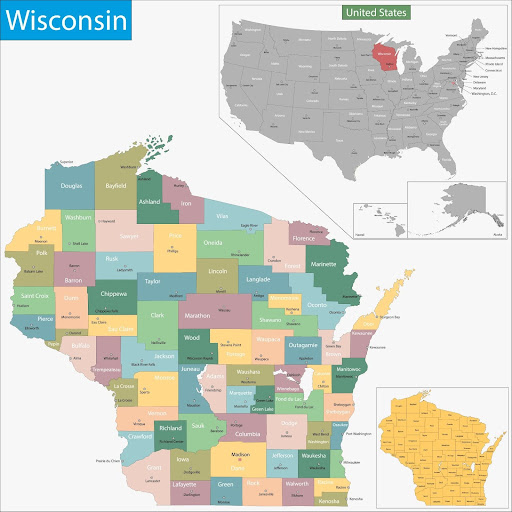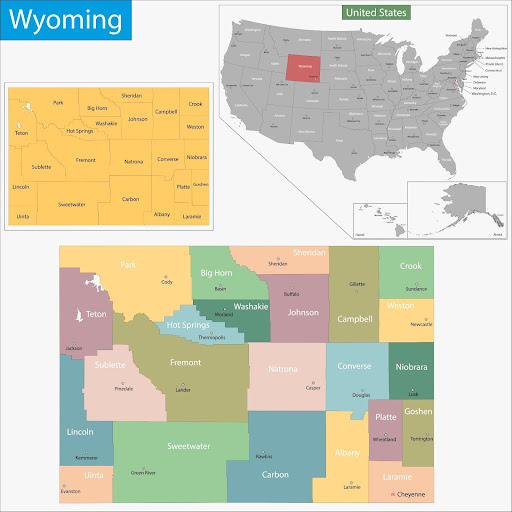Wisconsin isn’t often the first state that comes to mind when you think of wildfire. But for fire investigators, the state’s mix of pine barrens, sandy soils, and sprawling rural land creates a unique fire profile that demands attention. Fires here can crawl deceptively fast across light fuels, especially in spring, and often begin with something as mundane as a burn barrel or a brush pile.
This guide provides the essential information about wildland fire resources in Wisconsin: agency contacts, regional fire behavior, training resources, and where to find up-to-date fire intel. Whether you're responding to a backwoods burn in Washburn County or tracing ignition points near the WUI in Adams, this resource will help you prep and respond with precision.
For more on this topic, see our wildland fire resources page.
Live Incident Updates & Maps
Track active wildfires and statewide fire restrictions with this live tool:
State Overview
Wisconsin's wildland fire landscape is driven more by fuel moisture and human behavior than by dramatic topography. Key fire-prone regions include:
- Northwest Pine Barrens: Sandy soils, jack pine stands, and low humidity make this area a wildfire hotspot.
- Central Sands Region: Light, flashy fuels and open grasslands lead to rapid fire spread, often driven by wind.
- Rural Residential Zones: Many wildfires begin with debris burning, especially in counties with lax burn permit enforcement.
Wildfire Season Timeline
Wisconsin has a well-defined but intense fire season.
- Spring (March–May): Peak season. Dormant vegetation and dry weather before green-up mean fast-moving fires. Debris burns and agricultural clearing are common causes.
- Summer (June–August): Fire activity slows as vegetation greens, but occasional drought and equipment-caused ignitions still occur.
- Fall (October–November): A secondary fire window driven by leaf litter and low humidity.
Key State Agencies Involved
Local Wildland Firefighting Resources
Wisconsin’s fire suppression capacity is split between DNR-managed protection zones and county-run areas. The DNR employs seasonal fire rangers, operates Type 6 and 7 engines, and contracts aerial resources during peak season. Local departments often supply the first engines and on-scene manpower.
List of Local/State/Federal Fire Response Agencies
Contact Numbers and Emergency Links
- Report a Wildfire: Dial 911 immediately
- DNR Wildfire Info & Dispatch: 1-888-WIS-BURN
- Burn Permit & Restrictions Map: https://apps.dnr.wi.gov/wisburn/#/BurnRestrictions
Training & Volunteering
Wisconsin maintains strong NWCG-aligned training opportunities through the DNR and regional partners.
NWCG-Approved Academies and Centers
Volunteer and Seasonal Training Opportunities
Stay Informed on Wisconsin’s Wildland Fire Landscape
Fires in Wisconsin may not dominate headlines, but they still demand serious attention. Rapid ignition, high WUI overlap, and the sheer number of debris burn starts make the job of a fire investigator complex.
Knowing your fuel beds, tracking wind trends, and understanding how suppression decisions impact scene preservation are all key.
Investigators operating in this region benefit from building relationships with local DNR rangers, fire chiefs, and dispatch coordinators. The better your local network, the faster you can pinpoint origin and causation.
FAQs
How do I report a wildfire in Wisconsin?
Dial 911 or contact the Wisconsin DNR hotline at 1-888-WIS-BURN.
Can I burn brush in Wisconsin?
Only with a valid permit and only during legal burn hours. Check the current burn restrictions by county at https://apps.dnr.wi.gov/wisburn/.
Who investigates wildfires in Wisconsin?
In DNR protection areas, fire control staff lead investigations. In other areas, local fire departments or federal agencies (on USFS land) take the lead, often with joint coordination.
What is the biggest fire threat in Wisconsin?
Debris burns during spring green-up are the top ignition source, especially under windy, low-humidity conditions.
Where can I get NWCG-certified training in Wisconsin?
Through the Wisconsin DNR, USFS Chequamegon-Nicolet NF, or regional academies sponsored by the Great Lakes Forest Fire Compact.









